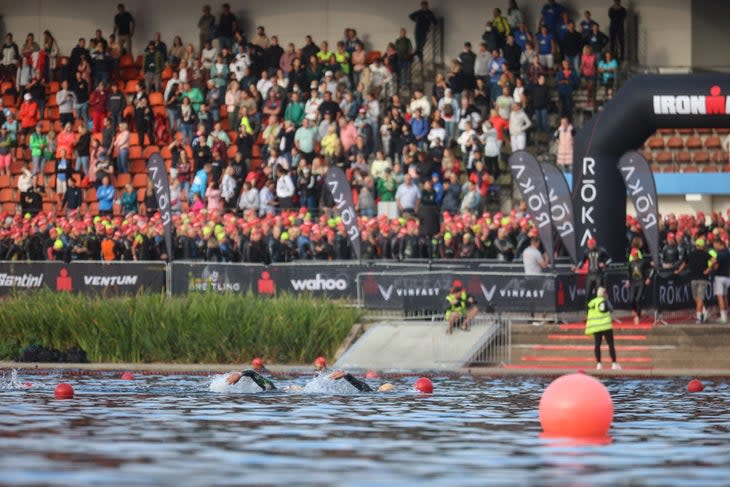Drafting Correctly Can Make a Big Difference in Your Swim
This article originally appeared on Triathlete
Truth: You are wasting time and energy if you are not drafting in the swim leg of a triathlon. Unlike drafting on the bike, which is not allowed in most triathlon races (the exception, of course, is the rare age-group draft-legal triathlon) there are no rules against drafting another swimmer in any race, son long as you do not impede or obstruct their movement. The principle of drafting in the swim is the same as on the bike – by positioning yourself behind someone who can break through the resistance (air on the bike, water on the swim), you can can enter the slipstream, where there is less drag to slow you down. The result: faster times with less effort. In fact, drafting on the swim can save upwards of 30 percent energy expenditure – that is, if you’re doing it properly.
Use these tips and strategies to make the most of the draft zone in your next triathlon swim.

Get in position
The best and easiest place to draft in open water is directly behind the feet of another swimmer. This position does not cause any interference with the lead swimmer and allows the drafting swimmer to keep track of the leader by following a trail of bubbles. Every time you lift your head to sight the buoys and check your direction, you break neutral body position in the water and lose speed. Following the bubbles of another swimmer allows the drafter to sight less often and save more energy.
Follow etiquette
Proper etiquette advocates not touching or tapping the feet and legs of another swimmer when you are behind their feet. Unless you know the swimmer and this is a preset form of communication, try not to swim too close. The draft zone extends 3-5 seconds behind the lead swimmer (notice how you can still feel a draft when you push off the wall five seconds apart in swim practice). Leave 1-2 feet between your outstretched hand and their feet to stay in the draft zone, but reduce the risk of constantly running into them.
Look for the right partner
Search for a swimmer traveling slightly faster than your pace--a brief surge to catch a draft is worth the energy as someone comes slowly past you. If Swimmer A races at 1:30 per 100 pace, but saves an estimated 20 percent by drafting, he should choose a slightly faster swimmer (someone who swims 1:20-1:25 pace) to follow. Therefore, Swimmer A will use the same amount of energy during the race but exit the water in a faster time.
RELATED: Do You Know Your Swim Gears?
Practice in the pool
Do long sets (for example: 3×400 or 1×1000) with drafting packs of 3-4 people swimming in a "train" or pace line. The first swimmer will lead for 100 yards and then stop on the wall while the rest of the group turns. As the final swimmer pushes off, the lead swimmer rejoins the group as the last swimmer. Continue this rotation, similar to a cycling pace line, for the remainder of the set. Make it more challenging by starting each interval with the entire group of swimmers pushing off the wall at the same time, sprinting the first lap, and then organizing into a pace line during the second lap.
RELATED: Triathlete’s Guide To Going From Pool To Open Water
For exclusive access to all of our fitness, gear, adventure, and travel stories, plus discounts on trips, events, and gear, sign up for Outside+ today.

